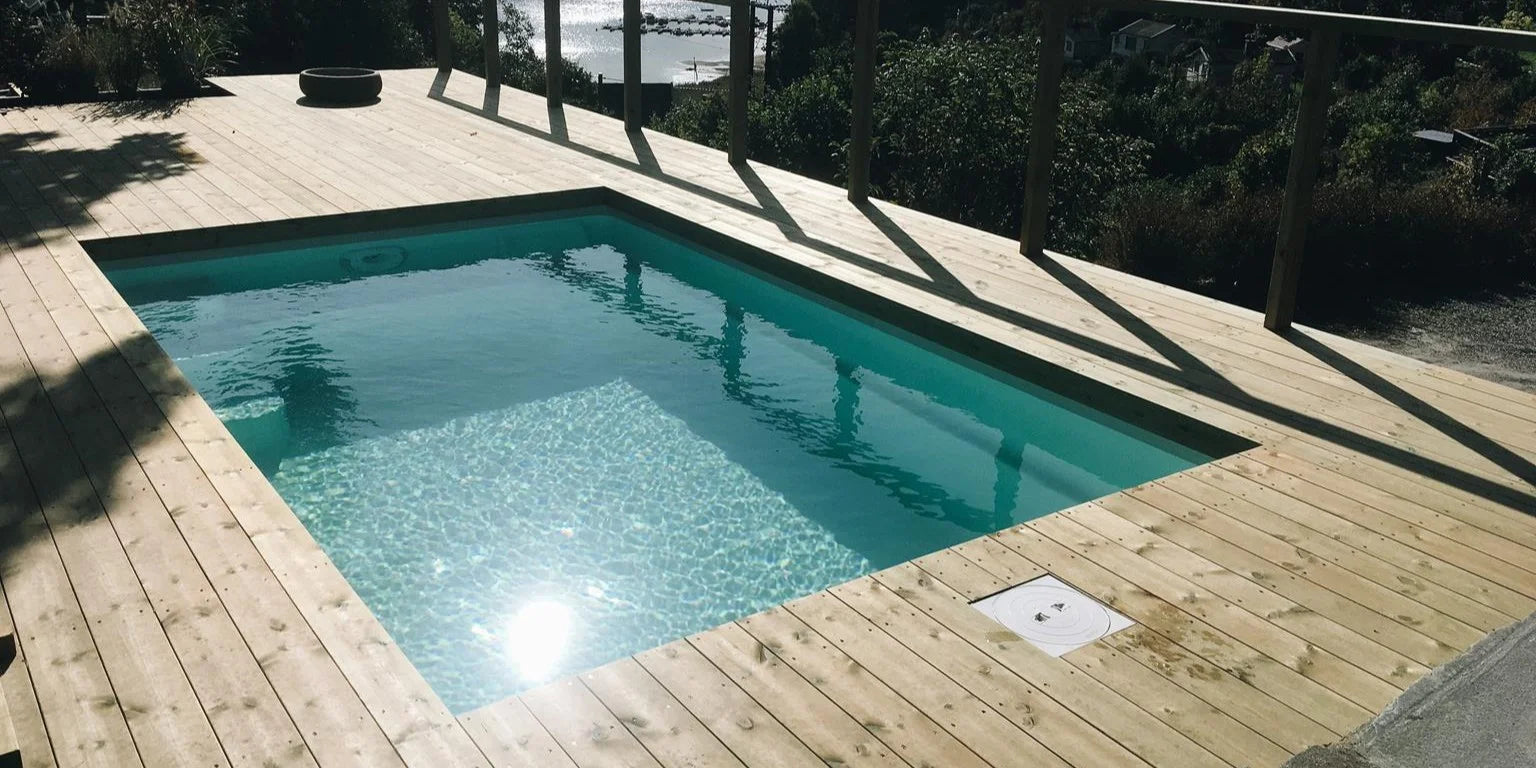Glasfiber or PP poolWhich pool should you choose?
Fiberglass Pool

25+ years

mixing of materials in multiple layers, harmful materials in production.

installation 1-2 weeks

risk of bubonic plague and cracks

lower insulation capacity than a PP pool
PP pool

45+ years

homogeneous polypropylene sheets harmless and more environmentally friendly materials

installation 1-2 weeks

no risk of bubonic plague and cracks

Energy efficient due to its high insulation capacity

Fremstilling and materials
Fiberglass pools are manufactured in carefully controlled factories, as fiberglass is a hazardous material, and safety must be considered during production. Pool manufacturers use protective masks and gloves to protect themselves from inhaling fiberglass particles.
During production, a mold is used where the gelcoat itself is sprayed on, giving the pool its color. Then a type of water barrier is applied in the form of vinylester or epoxy, followed by the application of a "core" that gives the pool its strength. The core can be made of composite, ceramic, kevlar, or basalt fiber mesh, and its purpose is to hold the pool together and protect it from cracks; and to provide its elasticity. Outside this core, a layer of polyester is then applied.

Glasfiber or PP pool?
Fiberglass pools have long been a popular choice in Sweden for those buying a pool. They are popular among families with children because of the smooth lines and the sparkling material. Another reason for the popularity of fiberglass pools is that it takes no more than a week to have the pool installed and ready for use.
There are many different manufacturers of this type of pool, ranging from American and Australian producers to Polish and more local manufacturers. This means that the quality (and the pool's lifespan) can vary between different manufacturers.

Lifetime of fiberglass pool
Fiberglass pools with a longer lifespan (25 years and up) are often made of vinylester and usually cost from around 100,000 SEK and are often manufactured in Australia or the USA. Fiberglass pools made of vinylester are sometimes also called composite pools.
There are pools on the market today that contain both polyester and vinylester, where the materials have been mixed to extend their lifespan. How long such a pool lasts depends on the number of layers, how many of the layers are made of polyester/vinylester, and how careful they were when manufacturing the pool.

Delivery and installation
Fiberglass pools are delivered just like PP pools as a "one-piece shell" – which means that the pool is delivered in one piece, with the pool's bottom, walls, and stairs complete. Nowadays, "one-piece shells" are preferred because the installation time for the pool is very short, resulting in a lower installation cost.
The installation of a fiberglass pool is roughly the same as for a PP pool. The installation of a fiberglass pool is carried out as follows:

Byldepest (osmose) in fiberglass pools
A fiberglass pool consists of different layers of polyester or vinylester. These materials are not waterproof, and polyester, for example, allows water to penetrate after just one year. When water molecules have penetrated a layer and are located between two layers, mold growth occurs. The mold fungus, in turn, produces a gas that pushes the sides of the fiberglass pool outward, and this is the reason why fiberglass pools suffer from blistering (osmosis).
The most common cause of a fiberglass pool suffering from blistering is that the material is of poor quality, or that there has been insufficient quality control during the manufacturing of the pool. If your pool has suffered from blistering/osmosis in one spot, unfortunately, there is a high risk that your pool will soon be affected in multiple areas.

Repair of a fiberglass pool that has developed blistering or cracks
It is often possible to repair a fiberglass pool that has been affected by blistering. The repair is done by sanding away some of the material and then filling the hole with gelcoat.
This type of repair is unfortunately quite expensive and is performed as a spot-on intervention on the affected area of the pool. Since a fiberglass pool that has been affected by blistering once usually develops it in several places, the repairs often end up being a costly affair.

PP Pool – Manufacturing and materials
A PP pool is made of the material polypropylene. Unlike fiberglass, polypropylene is not harmful to humans and is an environmentally friendly material, which is also approved for various types of food containers and drinking water containers.
During production, homogeneous sheets are welded together with a welding machine, where the ladder is also welded in using extrusion tools. The sheets that make up the pool are between 8 mm and 12 mm thick, creating a stable and durable construction.








